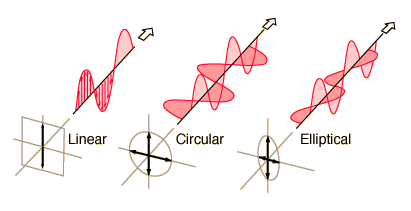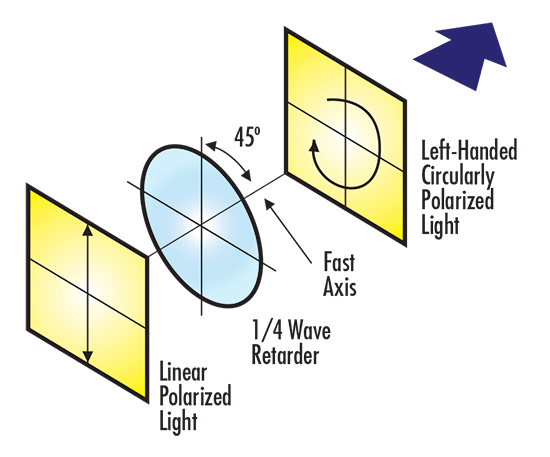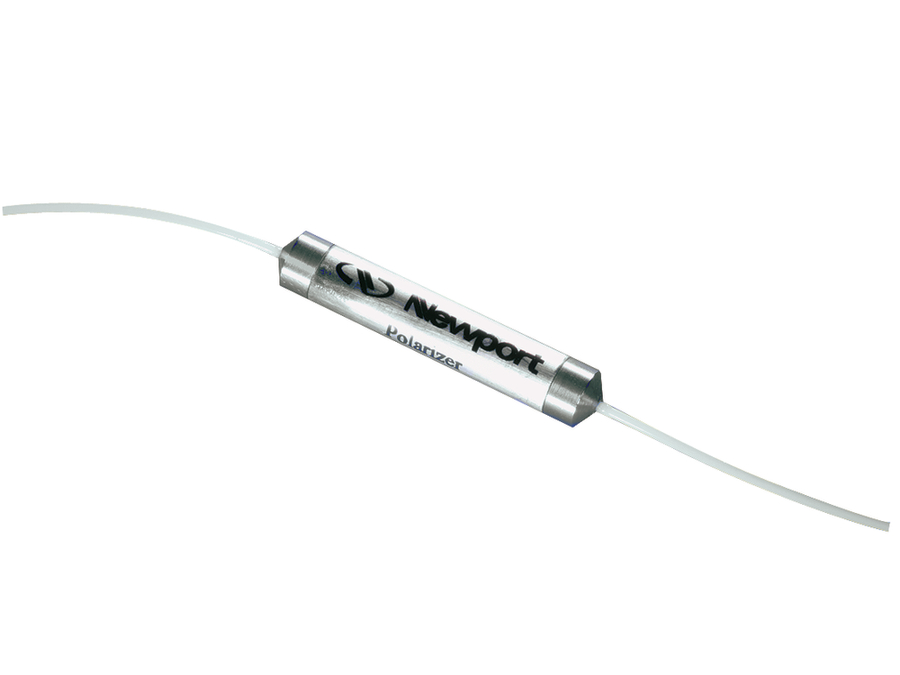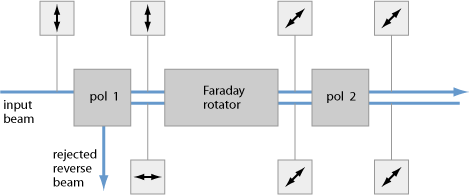
Polarization control means being able to filter out undesired light rays such as harsh glare from the sun. Courtesy of Contacts Advice.
Polarization As A Property of Light
Conversation about light waves typically focuses on frequency, wavelength, or intensity. Many introductory physics courses cover these concepts in great detail so that they are well understood. In this article, however, we address the lesser discussed property of direction in the form of polarization. The polarization of light reflects the orientation of oscillation in a light wave. This affects many aspects of light measurement including filtration, reflection, and focus ranges. We cannot determine the complete state of a light wave without knowledge of the polarization. Polarization control devices are therefore imperative in many optical applications to efficiently modify the polarization state of light.
Introduction to Polarization
Light is a transverse wave. This means the direction of the motion of the wave is perpendicular to the direction of oscillation. Consider, for example, the motion of a plucked string. When a taut string is displaced upward and let go, the string will oscillate in the “up and down” directions. The created wave, however, travels down along the length of the string. The polarization of a transverse wave describes the orientation of this oscillation. Light is described as “polarized” when the oscillation direction remains constant. Sunlight emits rays that propagate in all directions perpendicular to the direction of movement, therefore sunlight is unpolarized. It can however become polarized using polarization control devices, which we will discuss later on in this article.

The above figures portray the three types of polarization and their respective electric fields. Courtesy of HyperPhysics.
Classification of Polarization
There are three types of polarization dependent on the amplitude and phase of a wave. It is important to note that we define these polarizations based on the motion of the electric field vector.
Linear- Linearly polarized light propagates along a plane. This light contains an electric field oscillating along one axis. Linear polarization is defined as either vertical or horizontal depending on the oscillating axis of the electric field.
Circular- Circular polarization describes two perpendicular EM plane waves of equal amplitude and 90 degree phase difference- that is, they are perpendicular. Here the electric field traces out a circular perpendicular to the axis of motion. Circularly polarized light can be in states left-circular or right-circular dependent on the direction of rotation.
Elliptical- Elliptically polarized light consists of two perpendicular waves of unequal amplitude. As implied, the electric field vector traces out an ellipse as it moves through its direction of motion. Circular polarization is also a special case of elliptical polarization.
Polarization Control Devices
Modern advances allow researchers to shift light from one polarization type to another or polarize previously unpolarized light. Polarization control is essential to modern optics applications. These devices allow researchers and manufacturers alike to optimize their optical systems for the best possible results. Below we have some of the most common polarization control devices.

The figure shows how light shifts from linear to circular polarization when passing through a quarter-wave plate. Courtesy of Edmund Optics.
Waveplates
Waveplates alter the polarization state of passing light waves. The most common types include half-wave plates and quarter-wave plates. Half-wave plates shift the direction of linearly polarized light. Quarter-wave plates, meanwhile, convert linearly polarized light to circular, or circular to linear. These plates can also produce elliptical polarization. Waveplates provide an efficient method in controlling and analyzing the polarization state of light.

Fiber optic polarizers filter out light at unwanted polarizations. Courtesy of GlobalSpec.
Fiber Optic Polarizer
Polarizers are simply optical filters that only allow through light of a specific polarization. Fiber optic polarizers are especially useful in fiber optics systems to eliminate noise and interference. These polarization control devices are placed within fiber optic setups to transmit linearly polarized light, therefore evading undesirable inference patters within the fiber and improving signal. Ideal fiber polarizers attain a high extinction ratio and a low insertion loss. These devices are common in polarization analysis, noise monitoring, and image optimization.

Isolators cancel out the effects of an undesired reflected beam by utilizing multiple polarizers and a Faraday rotator. Courtesy of Fiber Optic Components.
Polarization Dependent Isolators
Fiber isolators eliminate the effect of back reflection and signal interference that cause scattering and optical damage. This polarization control device only allows light to travel in one direction by utilizing an input polarizer, a Faraday rotator, and an output polarizer. These components work to filter out unwanted reflection by polarizing the reverse beam so that the input filter rejects the light traveling back through the Faraday rotator.These isolators provide polarization control to optimize optical systems. They are ideal in applications of optical amplifying, fiber coupling, and mode locking.
Stand by for next week’s article to learn more about the industry and applications of polarization control!
